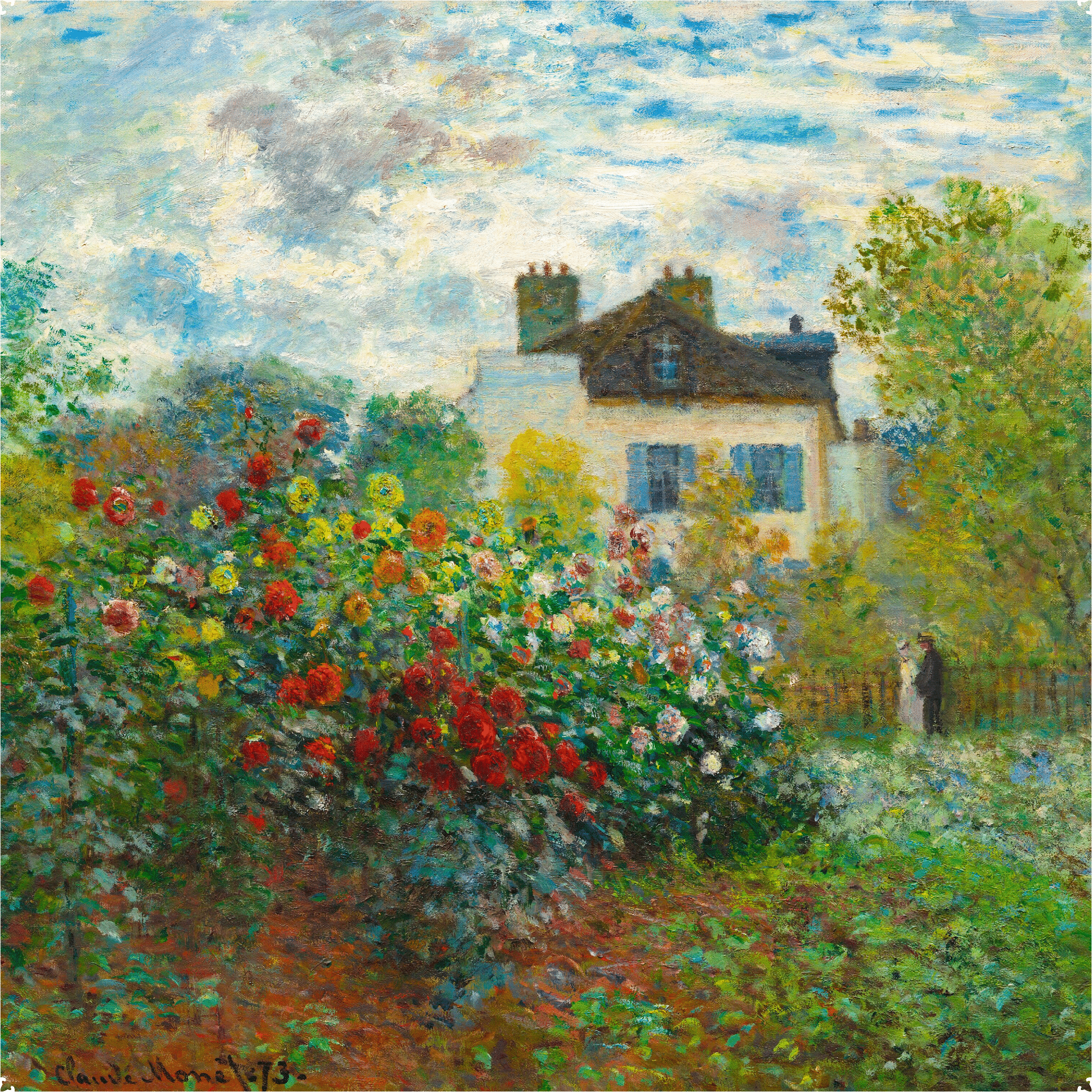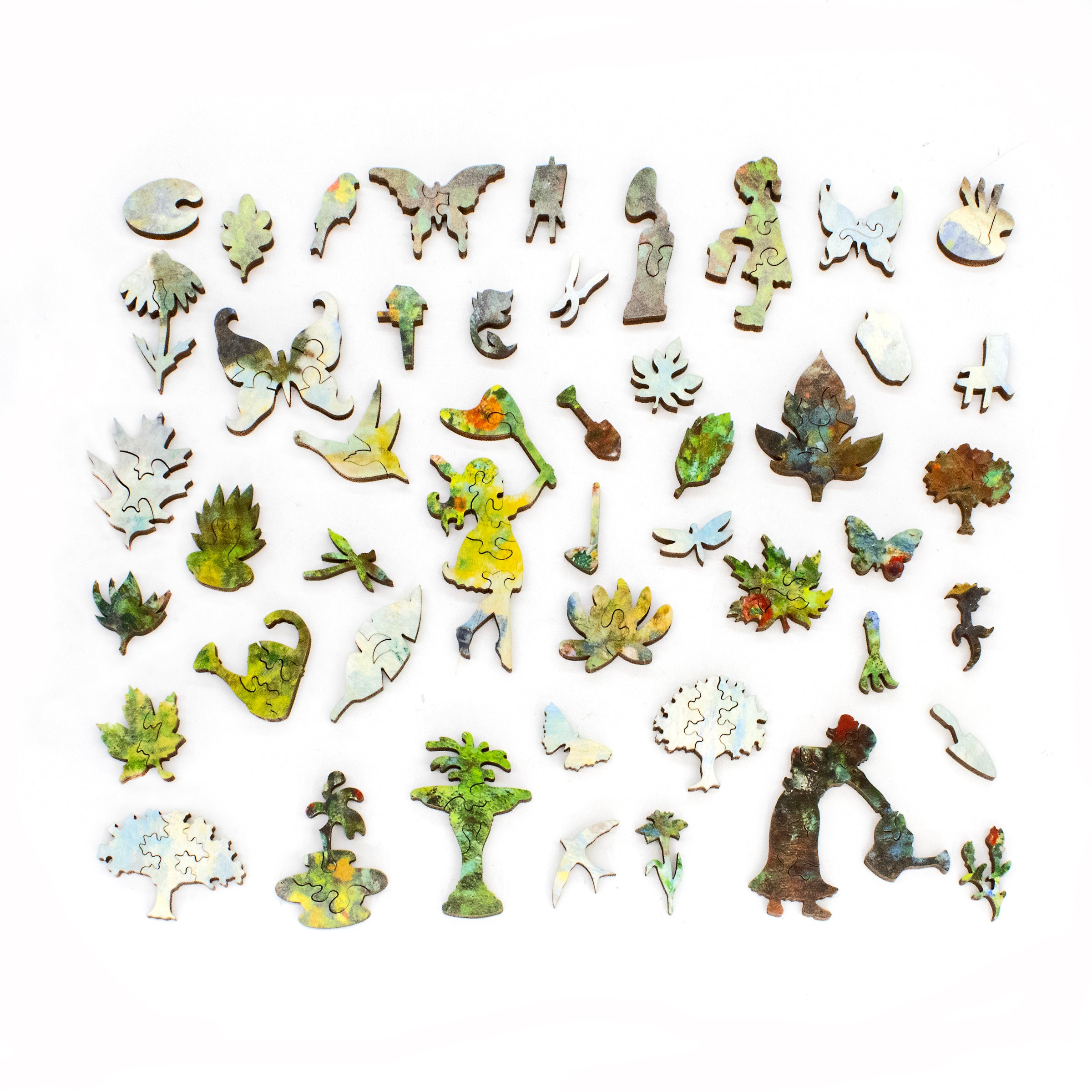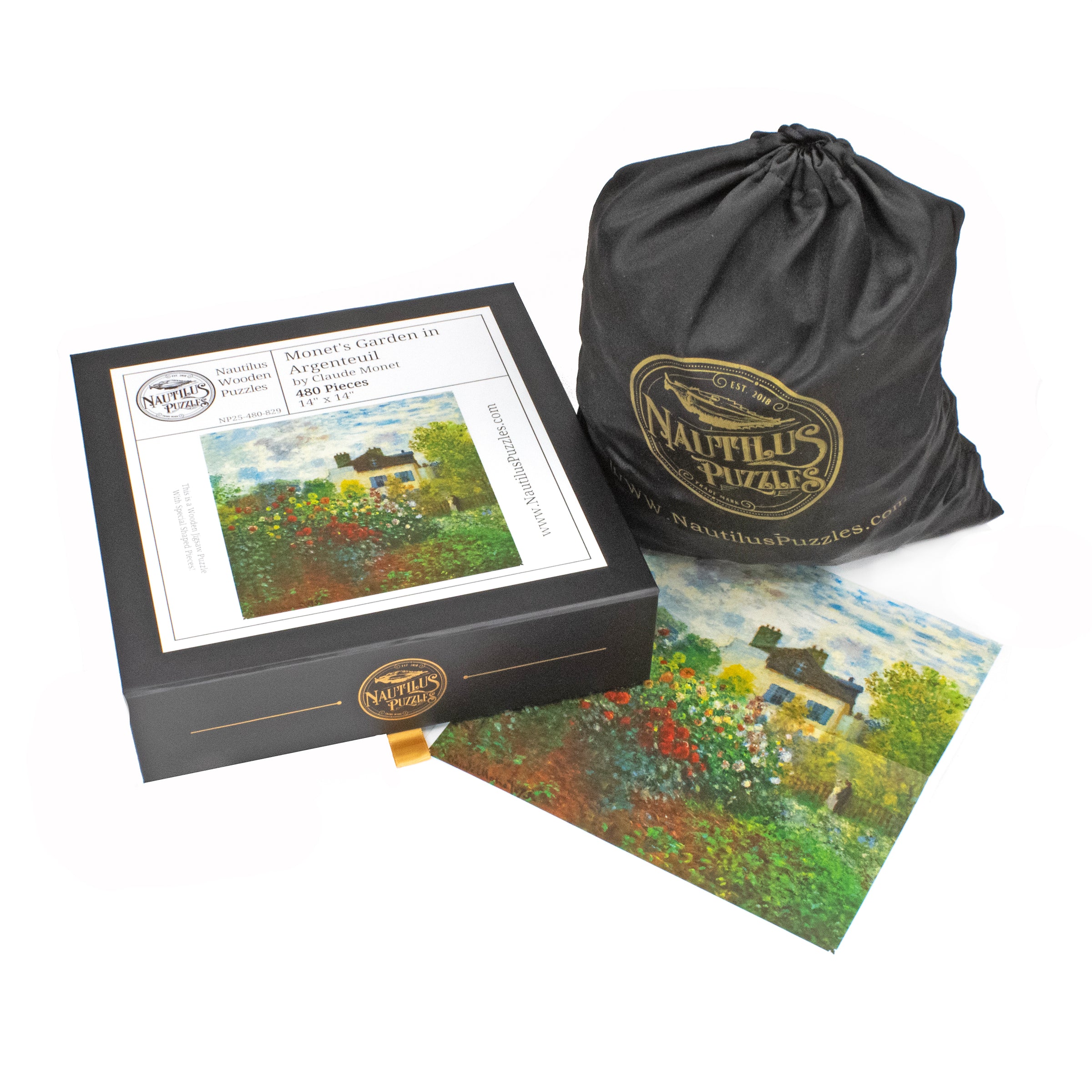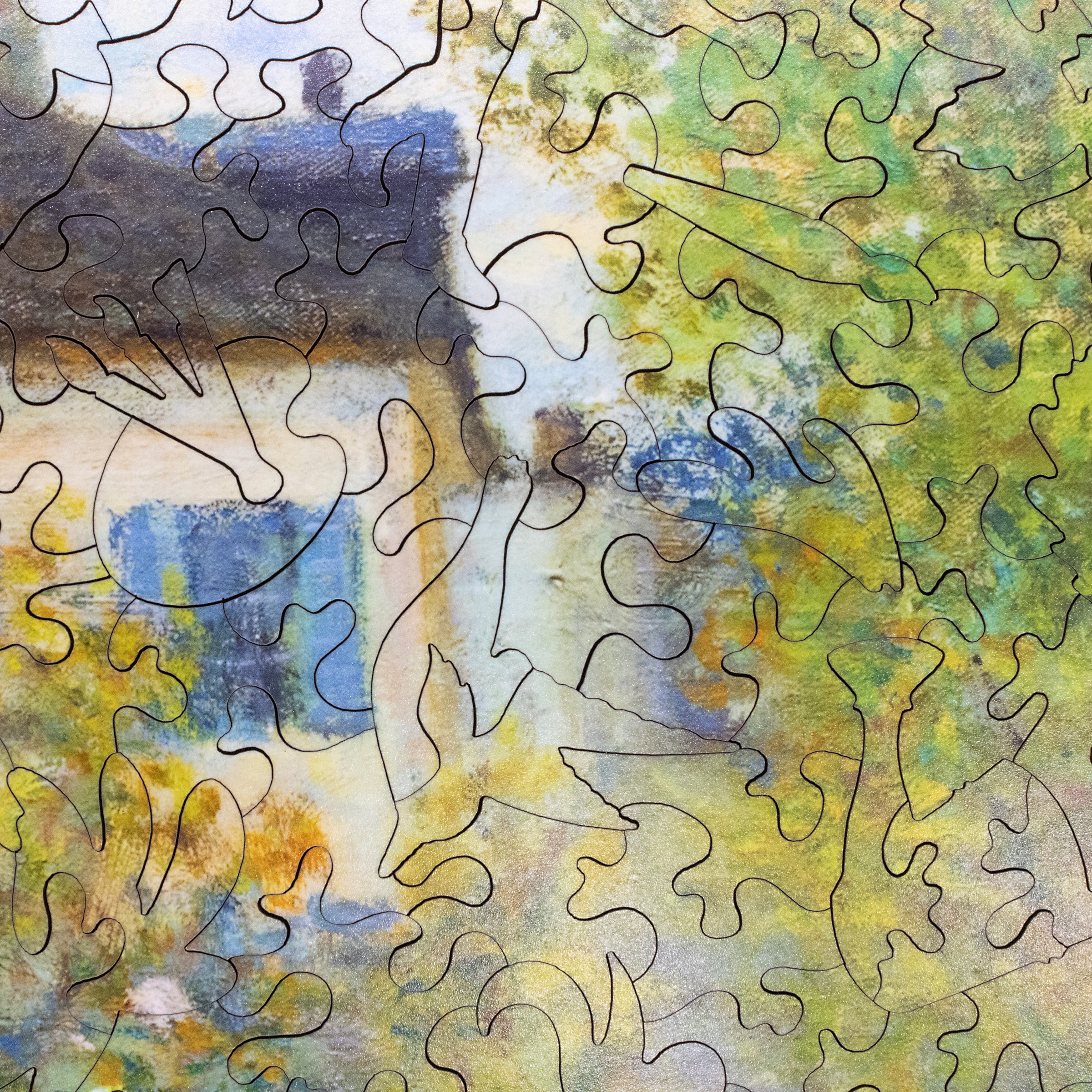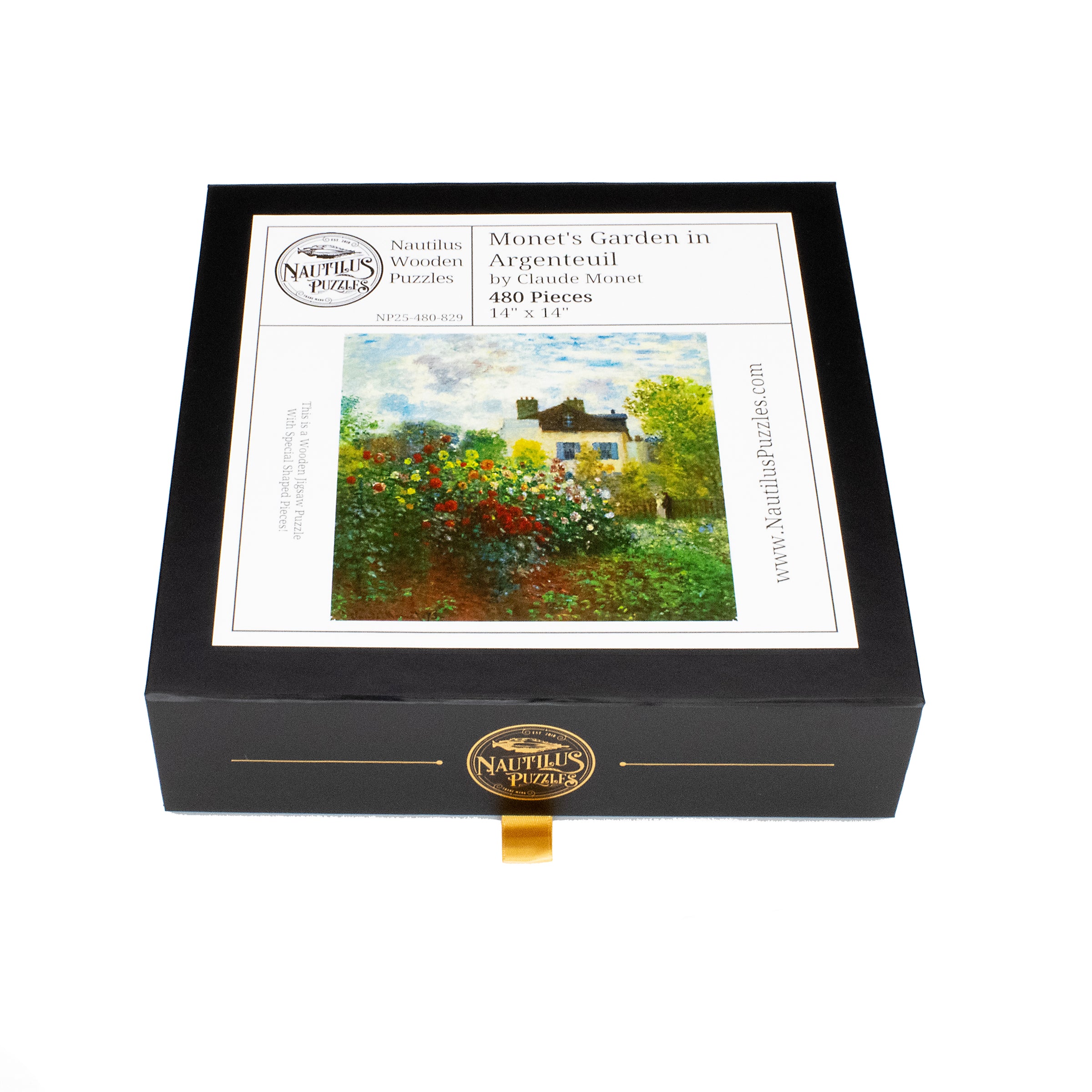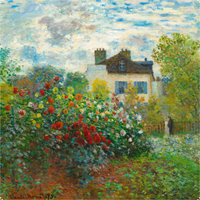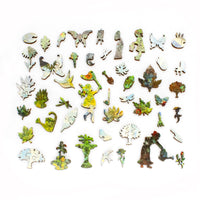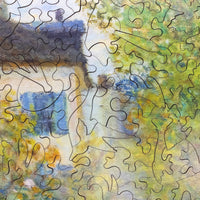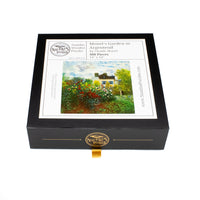Monet's Garden in Argenteuil by Claude Monet | 480 Pieces | Wooden Jigsaw Puzzle
- Regular Price
- Sale Price
- $119.95
- Regular Price
- $119.95
- Unit Price
- per
- Every puzzle invites you to discover uniquely handcrafted whimsy (shaped) pieces, thoughtfully designed to complement the image theme.
- Irregular pieces provide an engaging challenge, keeping puzzlers intrigued with interesting shapes and rewarding problem-solving.
- To ensure exceptional durability, each puzzle is crafted from premium 4mm FSC-certified Finnish birch plywood.
- Nautilus Puzzles are thoughtfully designed and meticulously crafted in the USA, on California's sunny central coast.
- The puzzles are precision laser cut with advanced technology, ensuring every piece fits together perfectly for a smooth and enjoyable experience.
Claude Monet, a central figure in the Impressionist movement, revolutionized the way artists approached light, color, and everyday subjects. His insistence on painting en plein air, directly capturing the fleeting qualities of natural light, set him apart from the academic traditions of his time. The image of his garden at Argenteuil, bursting with vibrant dahlias under a wide sky, reflects this shift—where form dissolves into atmosphere and color becomes the true subject. In this canvas, the precision of line gives way to brushstrokes that pulse with life, inviting viewers to experience the garden as a living, breathing moment rather than a static depiction.
During his years at Argenteuil in the 1870s, Monet immersed himself in gardening, both as a personal retreat and an artistic subject. The home and garden depicted in this painting were cultivated with intention, each flowerbed becoming a palette of vibrant colors. Argenteuil offered proximity to Paris while providing Monet with the tranquility he needed to explore seasonal changes and natural beauty with fresh insight. The informal elegance of the garden, with its layered colors and organic growth, mirrored the Impressionist desire to portray spontaneity and visual truth. Monet did not merely paint gardens; he composed them with the eye of an artist and the soul of a poet.
Later, in Giverny, Monet elevated this fusion of art and horticulture to its pinnacle. He transformed his surroundings into a living masterpiece—most famously, the water lily pond and Japanese bridge that would dominate his late work. But the roots of that vision can be traced to his earlier garden at Argenteuil, as shown here, where nature and brushstroke first began to blur. Monet’s legacy endures not just in the museums that house his paintings, but in the way his gardens—painted and planted—taught the world to see beauty in the passing light and the quiet bloom of a flower.
The perfect gift for wooden jigsaw puzzler collectors, Impressionist fans, and lovers of Claude Monet's paintings, this traditional adult wooden jigsaw puzzle can be done time and again. Our wooden jigsaw puzzle artists have included many summer and Impressionism-themed shaped whimsy wooden jigsaw puzzle pieces that match the subject of the painting, and we have integrated them in ways that will delight and surprise you as you put the wooden jigsaw puzzle together. Wooden jigsaw puzzles are great gifts for family and friends.
- Includes a Bonus Poster to Guide Assembly
- Number of Wooden Jigsaw Puzzle Pieces: 480
- Completed Wooden Jigsaw Puzzle Size: 14" X 14"
- Artist: Claude Monet
- Serial #: NP25-480-829
- Wood Thickness: 4mm
- Design Cut Style: Modern
- Difficulty: Level 3
- Made in the USA
- Wooden Jigsaw Puzzle for Adults
- Serial #: NP25-480-829
- Includes a Bonus Poster to Guide Assembly
- Made in the USA
- Number of Puzzle Pieces: 480
- Completed Puzzle Size: 14" X 14"
- Design Cut Style: Modern
- Difficulty: Level 3
If you order before 2:00 p.m. Pacific, your order will be shipped that day. Orders after 2:00 p.m. are shipped the next business day (M—F).
Delivery charges are calculated at checkout based on the weight/volume of your shipment and the shipping address.
USA Free Shipping: Offered on orders over $75 in value. Typically takes 8 - 10 Business Days, and the last mile is delivered by USPS. Please choose a paid shipping method if you cannot receive USPS delivery or if you are shipping to Alaska, Hawaii, U.S. protectorates, APOs, FPOs, or P.O. Boxes.
USPS Ground Advantage: 6 - 8 Business Days
UPS Groundsaver/Surepost: 7 - 9 Business Days
USPS Priority Mail: 2 - 4 Business Days
USPS Priority Mail Express: 1 - 3 Business Days
UPS 2nd Day Air: 2 Business Days. No Saturday Delivery
UPS Next Day Air: 1 Business Day. No Saturday Delivery
For your peace of mind, all orders are sent using a tracked courier service. Once your order has been picked up, you will receive an email with the tracking details, allowing you to monitor your shipment's progress.
Orders outside the U.S. are not eligible for Free Shipping. Please choose your paid shipping method during checkout. We offer DHL, UPS, and USPS Priority Mail for international shipments.
Customs and Import Duties: If your puzzles are being delivered outside the USA, your order may be subject to import fees. These are stipulated by each individual country and are not collected or remitted by Nautilus Puzzles. Unfortunately, as we cannot advise you on the amount of these fees, we recommend contacting your country’s customs office or tax agent for the respective rates.
Returns - Peace of Mind Guaranteed: If you are less than delighted with your new puzzle, you can return it to us within 30 days of receiving your order for a full refund or store credit. We ask that it be unused and in its original condition and packaging (shrink-wrap not removed).
If you contact us in advance, we can email you a prepaid shipping label that you can print and affix to your return. To request this label, simply provide your order number and reason for return to our customer service team at help@nautiluspuzzles.com. Shipping costs will be deducted from your refund/credit, but they are charged at our volume discount shipping rates rather than the standard retail rate.
Please note we can only accept custom puzzles for return or refund if there are quality issues, as these items have been produced specifically for you.
